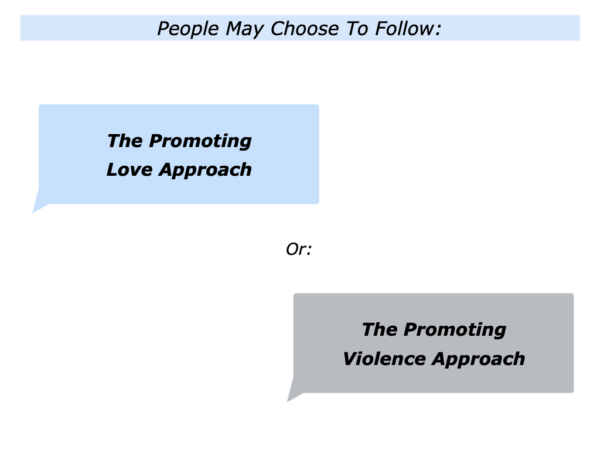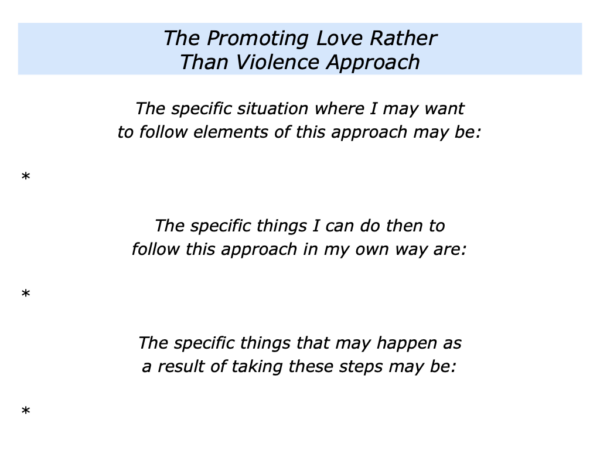
Different people choose to follow different approaches in life. The route they choose to follow can have consequences for both themselves and other people.
Some people follow the promoting love approach and also aim to be positive models. They try to go beyond words and practice this approach in their lives and work.
Some people follow the promoting violence approach. This may produce even more violence by stirring division and hate. It can also create collateral damage and affect innocent people.
Different people follow these approaches in different ways. Let’s explore how they may translate these into action.
The Promoting Love Approach
People who take this approach aim to show love for people and the planet. They encourage people, provide practical hope and promote peace. They aim to support both present and future generations.
Many people have taken this approach. They include Nelson Mandela, after his release from prison, Mary Robinson, the former President of Ireland, the Quakers and many spiritual leaders.
Such people are often positive realists. They have a positive attitude but are also good at reading reality. They aim to help people to build on their successful patterns and manage any unsuccessful patterns.
They aim to build positive environments in the family, education, work place and society. They build systems that provide people with the opportunity of stability, stimulation and success.
People who take this approach believe in following certain ethics. They aim to behave in a caring way that is respectful and helps to build a civil society.
They recognise that people make choices every minute and each choice has consequences. They therefore aim to take responsibility, help people and find solutions to challenges.
Such people aim to promote peace rather than provoke war. They therefore behave in a certain ways during times of uncertainty, turbulence or conflict. Being peace builders, they aim to stay calm and focus on the following themes.
They build on what
people have in common
They recognise that most people want similar things in life. They therefore help people to focus on what they have in common. Such as to be healthy, hopeful and happy.
They focus on helping
people to set common goals
They may, when appropriate, help people to look to the future rather than blame each other for the past. They help them to set common goals and see the benefits of achieving these common goals.
They help people to
achieve their common goals
They may, when appropriate, help people to follow strategies that work and achieve the common goals. This helps to build confidence and encourages people to work together to achieve future success.
Such people believe in following their principles in both positive and challenging times. They gain strength from doing this and aim to give strength to others. They also have a sense of perspective.
They see themselves as small in the great sweep of history. They do not see themselves as important but recognise that their actions can have consequences. They therefore aim to plant positive seeds of hope during their time on the planet.
The Promoting Violence Approach
People who promote violence may produce even more violence. They may focus on how people are different, create divisions and provoke war. This can create collateral damage and fracture society.
They may aim to get power and pursue their own agenda. They may create conflicts and scapegoat certain people. They find this becomes addictive and then do even more outrageous things to get attention.
Let’s return to your own life. Can you think of a situation where you may want to follow elements of the promoting love rather than violence approach? If you wish, try tackling the exercise on this theme. This invites you to complete the following sentences.



Leave a Reply